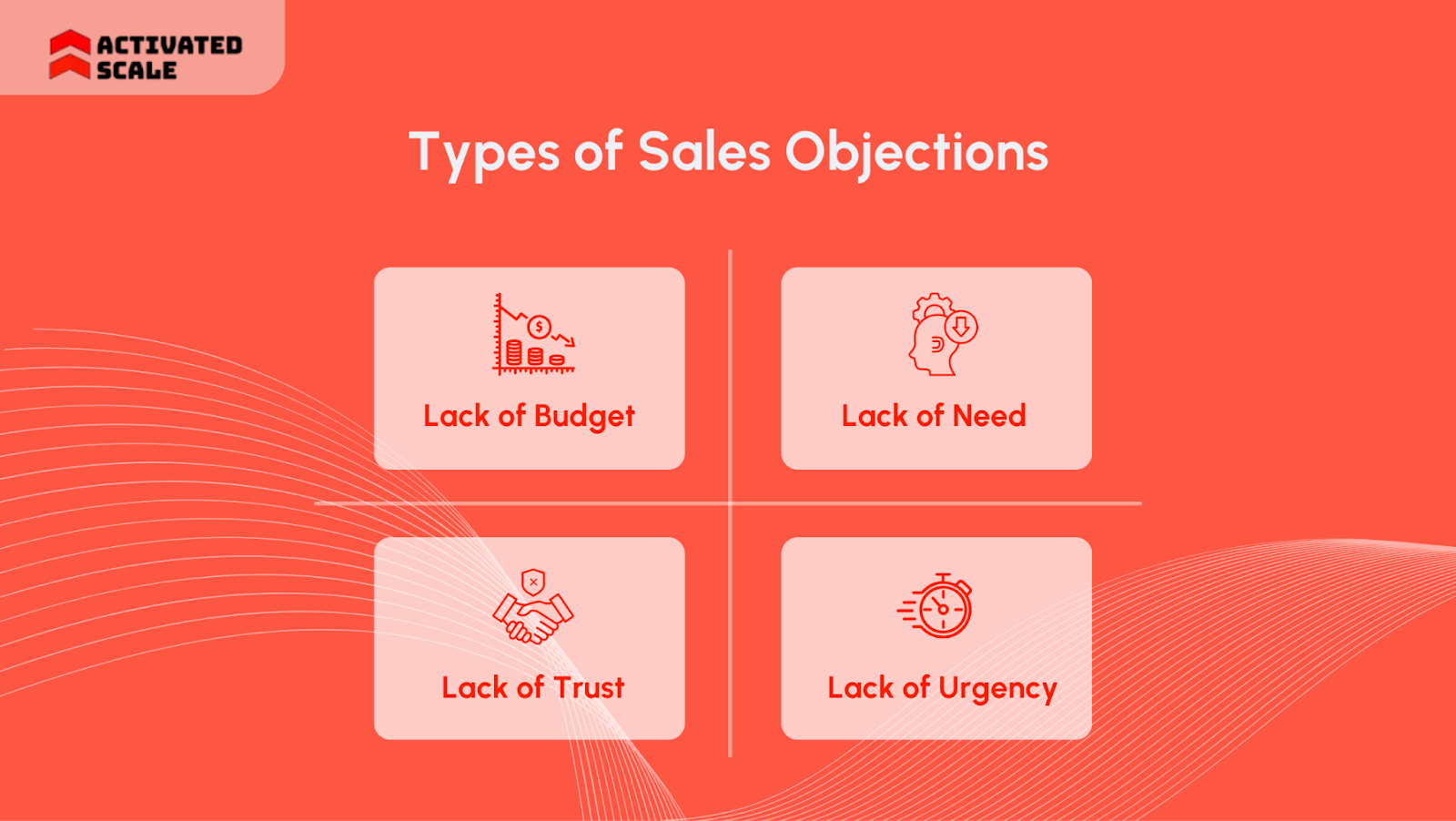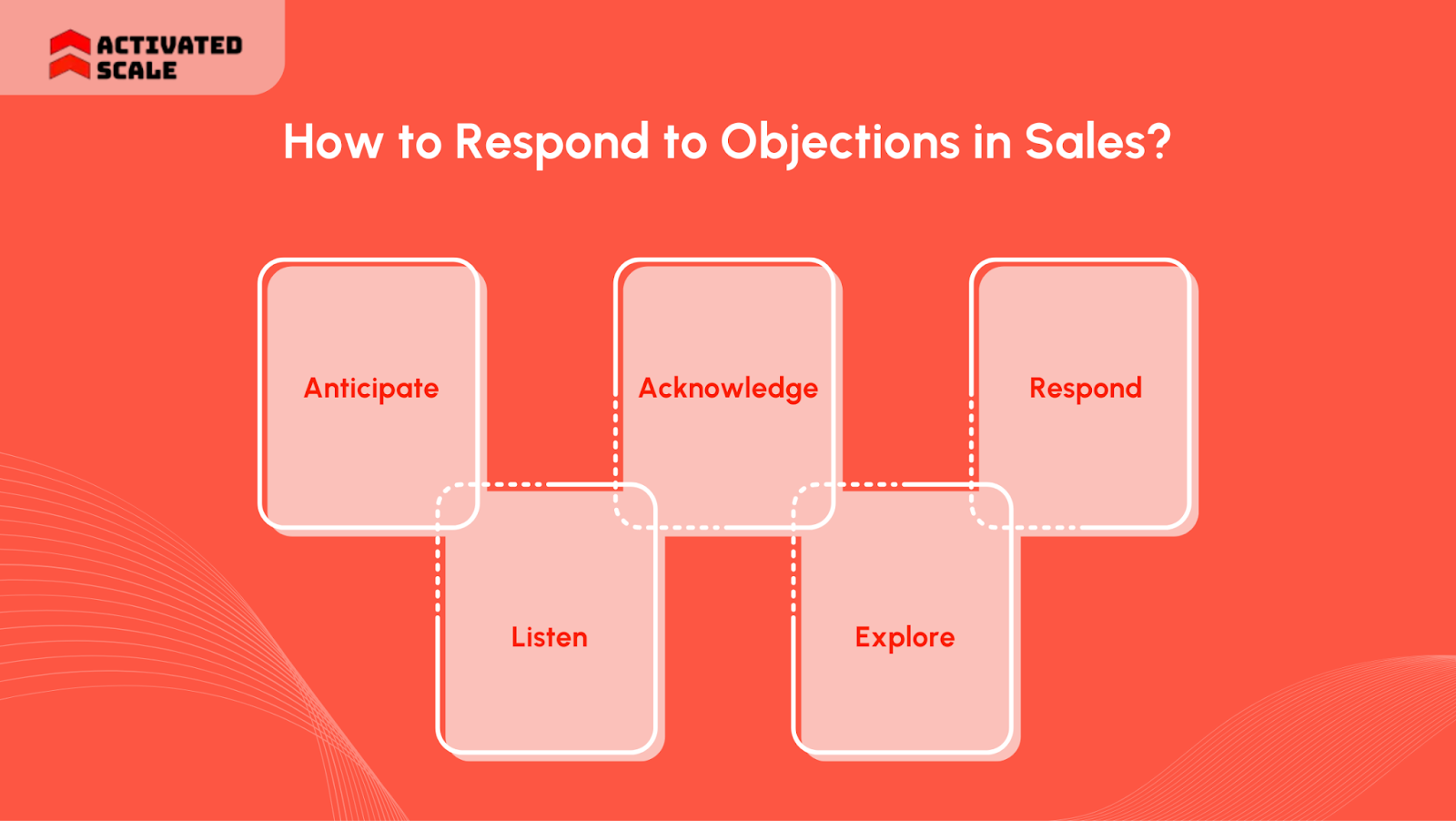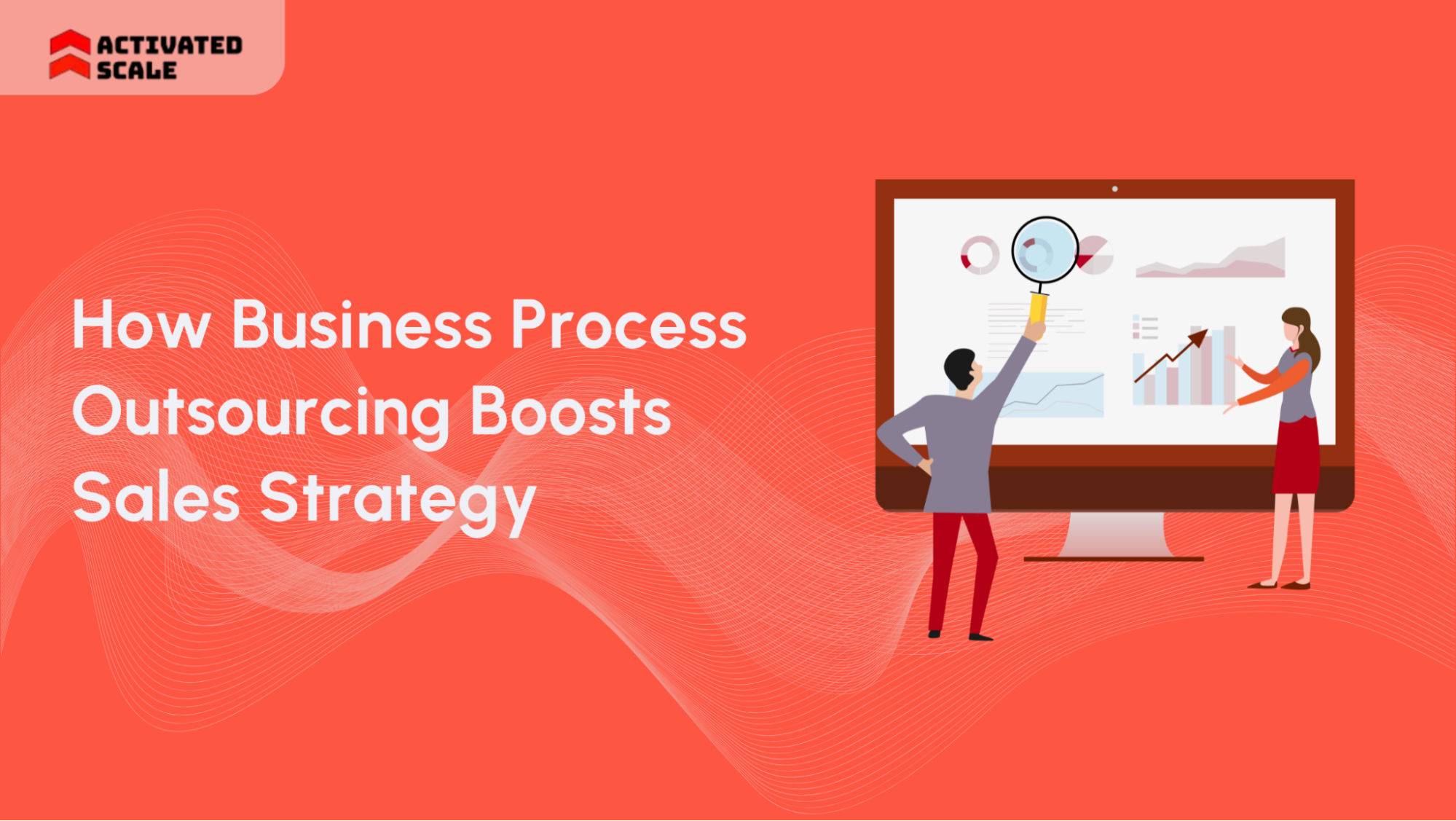“I’m not interested.” “It’s too expensive.” “Let me think about it.” If these phrases sound familiar, you’re not alone. In 2024, a staggering 70% of B2B sales reps failed to meet their quotas, with objection handling cited as the primary hurdle.
Moreover, only 11% of sales professionals felt very confident during customer calls, highlighting a significant confidence gap in the industry.
But here's the twist: objections aren't roadblocks, they're opportunities. They signal interest, albeit with reservations. Learning the art of responding to objections can transform these challenges into closed deals.
In this blog, we'll explore some proven strategies for responding to objections in sales. These strategies will improve your sales prowess and boost your confidence in every conversation.
What is a Sales Objection?
A sales objection is any concern, hesitation, or question raised by a prospect that stands in the way of a purchase decision.
It could stem from doubts about price, need, timing, or trust. Rather than being a flat-out rejection, objections are often signs of interest; they indicate that the buyer is engaged but needs more information or reassurance to move forward.
Addressing objections is not about arguing; it’s about listening, understanding, and responding thoughtfully to guide the buyer toward a confident “yes.”
The Importance of Handling Sales Objections
Handling sales objections is about uncovering concerns, building trust, and guiding prospects toward clarity.
Mastering this skill can turn hesitation into opportunity and significantly boost your chances of closing the deal.
Here’s why it's important:
- Builds Trust and Credibility
When you handle objections with patience and empathy, you show prospects that you care about their concerns, not just the sale. This creates trust, which is critical for building long-term customer relationships and increasing the chances of closing the deal.
- Uncovers Hidden Concerns
Objections often mask deeper issues. Addressing them allows you to uncover what’s truly holding the buyer back. By digging into these concerns, you can tailor your pitch more effectively and offer solutions that align with their specific needs.
- Strengthens Your Sales Strategy
Each objection is feedback in disguise. Learning from the common objections you face can help refine your messaging, improve product positioning, and prepare better answers. It will help you with future conversations, sharpening your sales approach over time.
- Prevents Lost Opportunities
Ignoring or mishandling objections can drive interested prospects away. Proactively addressing them gives you a second chance to clarify value, correct misunderstandings, and re-engage the buyer, turning potential “nos” into qualified “maybes” or even a solid “yes.”
Are you suffering from sales objections too? No worries anymore! With Activated Scale, you can hire vetted and experienced US-based Sales Talent. Hire AEs, SDRs, or BDRs and Sales Leadership on an initial contract to test for skills and then hire them as your employees!
Next, let’s explore different types of sales objections.
Types of Sales Objections

Even the most interested prospects can raise objections, which usually fall into one of four common categories. Understanding these types helps you prepare for them and respond with empathy, not pressure.
Let’s break them down:
1. Lack of Budget
When buyers say they can’t afford it, it’s rarely just about the price tag. It could reflect poor timing, unclear ROI, or competing financial priorities.
The key is to shift the conversation from cost to value, help them see the return, not just the expense.
2. Lack of Trust
Prospects won’t buy if they don’t trust you, your company, or your solution. This objection often stems from past negative experiences or not enough proof. Testimonials, case studies, and transparent communication can go a long way in bridging this gap.
3. Lack of Need
Sometimes the buyer doesn’t yet realize they have a problem, or they think they’ve solved it already. This is where discovery questions and storytelling help. You’re not just selling a product; you’re showing them why it matters in their world.
4. Lack of Urgency
“I’ll think about it” usually means they don’t feel the pressure to act now. Your job is to highlight what they might miss by waiting, whether it's a limited-time opportunity, growing competition, or the cost of inaction creeping up over time.
Understanding these objection types helps you stay calm and confident in tough conversations. Now that you know what you’re up against, let’s explore how to respond to objections in sales with strategy.
How to Respond to Objections in Sales?

Sales objections aren't signs of failure; they're signs of interest. But turning that interest into a sale takes more than charm; it takes strategy.
Here's a five-step framework that helps you respond effectively without sounding defensive or pushy:
Step 1: Anticipate
Anticipation is about proactively preparing for common objections before they come up. If you know what your prospects are likely to question, you can shape your pitch to address those concerns early.
What to do:
- Review past sales calls and identify recurring objections.
- Collaborate with your sales team to compile a library of common pushbacks.
- Customize your pitch to tackle objections before they arise subtly.
- Prepare data, case studies, or ROI metrics to support your value upfront.
- Keep your product messaging flexible based on audience type and industry needs.
Step 2: Listen
Listening means giving the buyer space to express their concerns without interruption fully. It’s about tuning in, not just hearing words.
What to do:
- Let the prospect finish their thought completely before responding.
- Use verbal cues like “I understand” or “Tell me more” to encourage openness.
- Maintain eye contact (in person or on video) to show engagement.
- Take brief notes to capture key pain points or emotional triggers.
- Avoid planning your response while they’re still speaking, and stay fully present.
Step 3: Acknowledge
Acknowledging means validating the buyer’s concern without defensiveness. It helps defuse tension and sets a respectful tone for moving forward.
What to do:
- Respond with empathy: “That’s a valid point” or “I completely understand.”
- Avoid dismissive language like “That’s not really a problem.”
- Mirror their concern back to them: “So you’re concerned about onboarding time?”
- Let them know others have felt the same way and what changed their mind.
- Stay calm and non-reactive, even if the objection feels challenging.
Step 4: Explore
Exploration is about digging deeper into the objection. The surface concern isn’t always the real one, and asking the right questions helps uncover it.
What to do:
- Ask open-ended questions like “Can you tell me more about that?”
- Identify whether the objection is a smokescreen (e.g., budget hiding a trust issue).
- Clarify specifics: “Is it the total cost or the monthly commitment that’s a concern?”
- Use silence, buyers often reveal more when you pause and give space.
- Look for emotional cues: is this fear, uncertainty, past experience?
Step 5: Respond
Response is the moment you address the concern directly. It’s where you offer clarity, realignment, and reassurance without being aggressive.
What to do:
- Reframe the objection in a positive, benefit-oriented way.
- Use proof: share case studies, success stories, or ROI numbers.
- Ask for confirmation: “Does that help address your concern?”
- Keep your tone calm, not persuasive, and this builds trust, not pressure.
- If the concern remains, suggest an alternative solution or compromise.
Objection handling isn’t about having the perfect comeback but about having the right mindset. Follow these steps, and you’ll reduce resistance and deepen connection.
You can also read Sales Tools Needed to Succeed!
Next, let’s examine 40+ examples of how to respond to common sales objections clearly and confidently.
40+ Examples of How to Respond to Objections in Sales
Knowing the steps is one thing, and putting them into action is another. In this section, you’ll find 40+ real-world responses to common sales objections that will help you stay composed, confident, and in control during any sales conversation. Here are the examples:
1. “It’s too expensive.”
Response:
“I hear you, it’s a big investment. But many of our clients felt the same way initially. Once they saw the ROI, especially how much time and effort it saved their teams, it actually ended up saving them more in the long run.”
2. “I’m not ready to decide yet.”
Response:
“That makes sense, big decisions deserve thought. Just so I understand, is there any specific information or step holding you back that I can help with now? I want to make sure you’re fully supported, even if the decision comes later.”
3. “I need to check with my team first.”
Response:
“Absolutely, it’s great that your team is involved. Would it help if I sent over a short summary you could share with them? Or, if it’s easier, we can hop on a quick call together to make sure everyone’s aligned.”
4. “We’re already working with another vendor.”
Response:
“Thanks for sharing, many of our current clients were in the same position. We’re not here to replace anyone overnight, but if there’s an area where your current vendor falls short, I’d love to show how we could complement what you already have.”
5. “I don’t see the need for this right now.”
Response:
“Understood. If it’s alright, I’d love to learn more about your current setup. Often, when we walk through your goals, we discover some areas where this could actually solve a problem you didn’t even know you had.”
6. “Send me an email, I’ll look at it later.”
Response:
“Sure, I’ll send it over. Just curious, what would be most helpful to include so it doesn’t get lost in your inbox? And if it’s okay, how about a 5-minute call after you’ve had a look, just to address any quick questions?”
7. “We don’t have the budget for this.”
Response:
“I completely understand, budget constraints are real. That said, would it be helpful if we explored a phased approach or a more flexible pricing option? We may be able to find a way to make this work within your limits.”
8. “Your competitor offers a lower price.”
Response:
“That’s a fair point, some competitors do lead with price. We focus more on long-term value and service. If it’s alright with you, I’d love to walk you through what’s included and why our clients choose us even when we’re not the cheapest.”
9. “We’re too busy right now.”
Response:
“Totally get that, timing is everything. What some clients found helpful was scheduling a short onboarding for later, while locking in current pricing or availability. Would that kind of flexibility make it easier to move forward?”
10. “I’ve had a bad experience with something similar.”
Response:
“I’m really sorry to hear that. Would you be open to sharing what went wrong? That helps me understand how we can do things differently, and we’re more than happy to prove ourselves through a small pilot or trial.”
11. “I don’t think your solution fits our industry.”
Response:
“That’s a valid concern. While we may not be industry-specific, we’ve successfully worked with several companies in similar spaces. I’d be happy to show you case studies or results that highlight how we adapt our solution to your specific needs.”
12. “We’re doing fine with our current process.”
Response:
“I respect that, it’s great that things are running smoothly. Out of curiosity, if there was one thing you wish worked better or faster in your current setup, what would it be? Maybe there’s room for small improvements with big impact.”
13. “We’ve never heard of your company.”
Response:
“Totally fair. We may not be a household name yet, but we’re trusted by 2,000+ companies, including Urban Platter, Dharma Productions, and Mokobara. I’d love to show you why so many fast-growing teams are making the switch to us.”
14. “Can you just give me your pricing?”
Response:
“Sure, I can send over the pricing, but it’ll make more sense once I understand your specific needs. That way, I can tailor the quote and ensure you’re not overpaying for features you don’t need. Would that be okay?”
15. “We’re not looking to change anything right now.”
Response:
“Change can be tough, especially when things are steady. But sometimes, small shifts lead to major gains. If it’s alright, I’d love to show you what your competitors are doing differently, and what that could mean for you in the long run.”
16. “We’ve already tried something like this before; it didn’t work.”
Response:
“Thanks for being honest, that kind of insight really helps. Can I ask what went wrong last time? We may be able to address those gaps or take a different approach that better aligns with your goals.”
17. “I don’t make the final decision.”
Response:
“Thanks for letting me know. Could we work together to gather the right details for your decision-maker? I’d be happy to provide a summary, proposal, or even join a meeting to help make the case from your side.”
18. “I’m worried about implementation time.”
Response:
“That’s a really common concern. To ease the process, we offer white-glove onboarding and dedicated support to get you up and running quickly. Most of our clients live within [X] days, with minimal disruption to their daily work.”
19. “Your solution seems too complex for our team.”
Response:
“I hear you, simplicity is key. That’s actually why we designed our platform to be intuitive, even for non-technical users. I’d be happy to walk you through a live demo so you can see just how easy it is in action.”
20. “We’ve already allocated our budget elsewhere this quarter.”
Response:
“Understood, budgets are tight and planned well in advance. Would it help if we explored options for a future rollout or even a no-commitment pilot? That way, you’re ready to move when the timing aligns with your budget.”
21. “I need more time to think about it.”
Response:
“Of course, this isn’t a small decision. Would it help if I shared a short summary of what we discussed, along with client results? That way, when you revisit it, you’ll have everything in one place to make a confident decision.”
22. “We’re under contract with another provider.”
Response:
“Totally makes sense. Out of curiosity, how’s that relationship working out so far? Even if you’re locked in now, I’d love to stay in touch and see if we can be a future fit when that contract comes up for renewal.”
23. “Your tool has too many features. We don’t need all that.”
Response:
“Fair point, more isn’t always better. Many of our clients felt the same way until they realized how modular and customizable it is. We can tailor the setup to only include what’s relevant to your team, no fluff.”
24. “We’re not tech-savvy enough for this platform.”
Response:
“Thanks for being upfront, that’s something we’ve heard before. That’s why we’ve built a support system that includes onboarding sessions, training, and a customer success manager who’s always a message away. You won’t be left figuring things out alone.”
25. “We’ve had issues with post-sales support in the past.”
Response:
“That’s frustrating, and I don’t blame you for being cautious. Our post-sale experience is where we truly shine. We assign a dedicated account manager and maintain response times under 2 hours. Happy to connect you with a client who can speak to that.”
26. “We’re a small team, this might be too much for us.”
Response:
“Thanks for sharing. Actually, many of our clients are lean teams looking to save time and manual effort. Our solution is designed to do the heavy lifting so your team can focus on what matters most, without getting overwhelmed.”
27. “We don’t want to be locked into a long-term contract.”
Response:
“I hear you, commitment can feel risky. We offer flexible plans, including short-term options or trials, so you can experience the value firsthand before making a long-term decision. Would that give you more peace of mind?”
28. “I’m not sure this aligns with our current goals.”
Response:
“Appreciate your honesty. Would you be open to sharing what your current goals are? I can help map out whether this fits or where it could support them indirectly, sometimes the alignment is better than it first appears.”
29. “I’ve seen negative reviews online.”
Response:
“That’s understandable, online feedback can be mixed. I’d be happy to walk you through what those reviews were about and how we’ve addressed them since. Also, I can share direct testimonials from clients who had a different, more recent experience.”
30. “I don’t want to be bombarded with follow-ups.”
Response:
“I get that, no one likes pressure. My goal isn’t to chase, it’s to support. If you prefer, we can set a specific follow-up timeline that works for you or I can simply leave you with helpful resources to revisit when you’re ready.”
31. “This sounds too good to be true.”
Response:
“I get why it might feel that way, especially if you’ve been promised a lot before. That’s exactly why we back everything with real results, live demos, and client references. I’d be happy to walk you through how it works in practice.”
32. “I don’t want to switch from what we’re already used to.”
Response:
“Change can definitely be daunting. The good news is that we make the transition simple and low-risk. We offer step-by-step onboarding and can run in parallel with your current setup to ensure there’s no disruption during the switch.”
33. “We’re waiting for the next quarter to start before making decisions.”
Response:
“Totally understandable. Would it make sense to start conversations now so that, when the new quarter begins, you’re ahead of schedule? That way, you're not scrambling later and can take full advantage of new initiatives right away.”
34. “I don’t think this will move the needle for us.”
Response:
“Thanks for being direct. Can we explore what ‘moving the needle’ looks like for you? That helps me understand if we’re a fit or if there’s a particular use case you haven’t considered yet that could deliver that impact.”
35. “This feels like too much of a learning curve.”
Response:
“You’re not alone! Several of our clients thought that at first, too. But they were surprised at how intuitive things felt after onboarding. We offer training, live walkthroughs, and even ‘done-for-you’ setup options if you’d prefer a hands-off experience.”
36. “I don’t want to be locked into another sales conversation.”
Response:
“Totally get it. No pressure from my side, I’m just here to provide clarity and value, whether or not we move forward. Would it help if we just kept this to one short conversation, and you can decide from there?”
37. “There are too many similar tools in the market.”
Response:
“You’re right, there’s a lot out there. But our clients tell us what sets us apart is [insert unique differentiator, e.g., our hands-on support, faster results, or customizable features]. I’d love to show you that difference firsthand, even in a 15-minute demo.”
38. “We’re in the middle of a reorg, it’s bad timing.”
Response:
“Reorgs can definitely shake things up. Would it be helpful if we had a light-touch conversation now, just so you’re informed when things settle? That way, when the dust clears, you’ve already got a solution in your back pocket.”
39. “It’s not a priority right now.”
Response:
“Understood. Sometimes, it’s hard to prioritize until something becomes urgent. But I’d love to share a few ways this might actually support your current top priorities, and if it’s not the right time, we can revisit later with zero pressure.”
40. “I’m worried we won’t use it enough to justify the cost.”
Response:
“That’s a fair concern. Many clients felt the same at first, until they saw how seamlessly it fit into their daily workflows. I can show you exactly how others in your position are using it regularly and getting strong returns.”
41. “We’re concerned this will require additional headcount to manage.”
Response:
“That’s a smart question and one we take seriously. Our platform is built to reduce manual workload, not add to it. Most teams actually free up time after implementation. In fact, some clients manage everything without hiring anyone new.”
42. “Our leadership isn’t convinced this aligns with our long-term strategy.”
Response:
“Great point, executive alignment is key. Would it help if I shared a strategic overview highlighting how this supports growth, scalability, or risk reduction over time? I can tailor it to reflect your leadership’s goals and language.”
43. “We’ve been burned by hidden fees in the past.”
Response:
“That’s frustrating, and I appreciate you being upfront. Transparency is a non-negotiable for us. I’d be happy to walk you through a full cost breakdown, no surprises, no fine print. What you see is exactly what you get.”
44. “Your platform seems like it would take too long to show results.”
Response:
“That’s a fair concern. Some solutions do take months to deliver, but we focus on fast wins. Most of our clients start seeing measurable outcomes within the first few weeks. I can show you specific metrics if you’d like.”
45. “This feels like a temporary fix, not a long-term solution.”
Response:
“I appreciate that perspective. While it can solve short-term pain, it’s actually built for scale. Many of our clients start with one use case, then expand as their needs grow. I can walk you through how that evolution typically happens.”
You now have a full arsenal of 40+ sales objection responses, each crafted to keep conversations alive, respectful, and forward-moving!
Conclusion
Objections aren’t roadblocks, they’re opportunities in disguise. When you learn to embrace them, you shift from pushing a product to having real, trust-building conversations. The key is knowing the difference between a true objection and a casual brush-off.
One deserves thoughtful dialogue, the other, graceful redirection. Mastering this balance turns you from just another salesperson into a trusted advisor.
And in today’s sales landscape, that’s what truly sets you apart. Handle objections well, and you don’t just close deals, you build relationships.
Here at Activated Scale, we help you connect with a vetted and experienced Fractional SDR or Fractional AE in 7 days or less. Sometimes in under 48 hours! With an expert team, handling sales objections will be smoother than ever. So, book a demo with us and build a sales team that takes your business to the next level!
The Ultimate Guide to Hiring a Salesperson!
Get the step-by-step guide to hiring, onboarding, and ensuring success!
_edi.png)




